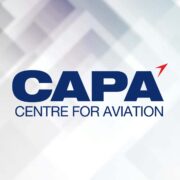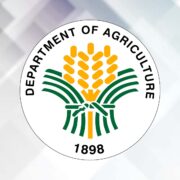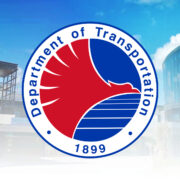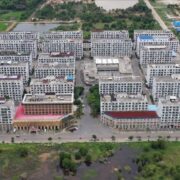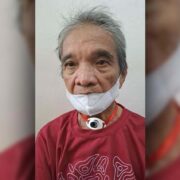The ‘mad, young modder’ behind the racing Tamaraws

The cat, er, the Tamaraw, is out of the bag. It had just been announced, during the awarding ceremonies of the Toyota Gazoo Racing Philippine Cup’s Race Weekend number 3—the final series of races for this season—that there will be an official category of races for the Toyota Tamaraw in next year’s series of the TGR Philippine Cup.
A few months before, this was all just speculative talk, a seemingly crazy idea floated by some motorsport enthusiasts, which Toyota Motor Philippines picked up and, surprisingly, took seriously.
You know who else took this seriously and accepted the challenge? A young kid named Carlos Luis Gono, vice president of AutoPlus. It was Autoplus that TMP took in as an official TGR partner to develop and re-work the iconic workhorse into a racehorse.
And so, Carlos Luis went to work on the Tamaraw. By the time Race Weekend 3 was underway last weekend, the racing Tamaraws were out of the gates, zooming their way to lap times rivaling those of the racing Vios sedans. The Tamaraws were making short work of the 4.189-km Clark International Speedway, its drivers registering completed laps in 2 minutes 30 seconds or less.

By the time their exhibition race was over, the Tamaraws convinced everyone that their time on the tracks had come.
All of this begs the question, how in the world did these Tamaraws do it? What was done to them to make them run averages of over 100 kph on a circuitous race track?
For that, I had to walk over to the race paddocks and talk to Carlo Luis himself, the man responsible for unleashing the Mr Hydes of these unassuming Dr Jekylls. With the help of TMP first vice president Elijah Sue Marcial, we tracked down Carlos Luis who was busy working a visibly impressed crowd gathered around the five race-modified Tamaraws.
Seeing that Carlos Luis was quite busy, I cut to the chase and asked how he did it.
“First, we made sure that we had all the safety equipment—the roll cage, fire extinguisher, kill switches, safety harnesses, and bucket seats. Then we worked on the suspension. TCD (Toyota Customizing and Development Co), formerly known as TRD (Toyota Racing Development), supplied us with suspension kits for the front and rear, an LSD (limited slip differential), and lowering blocks for the rear. When we tried the car, we were so surprised,” he explained.
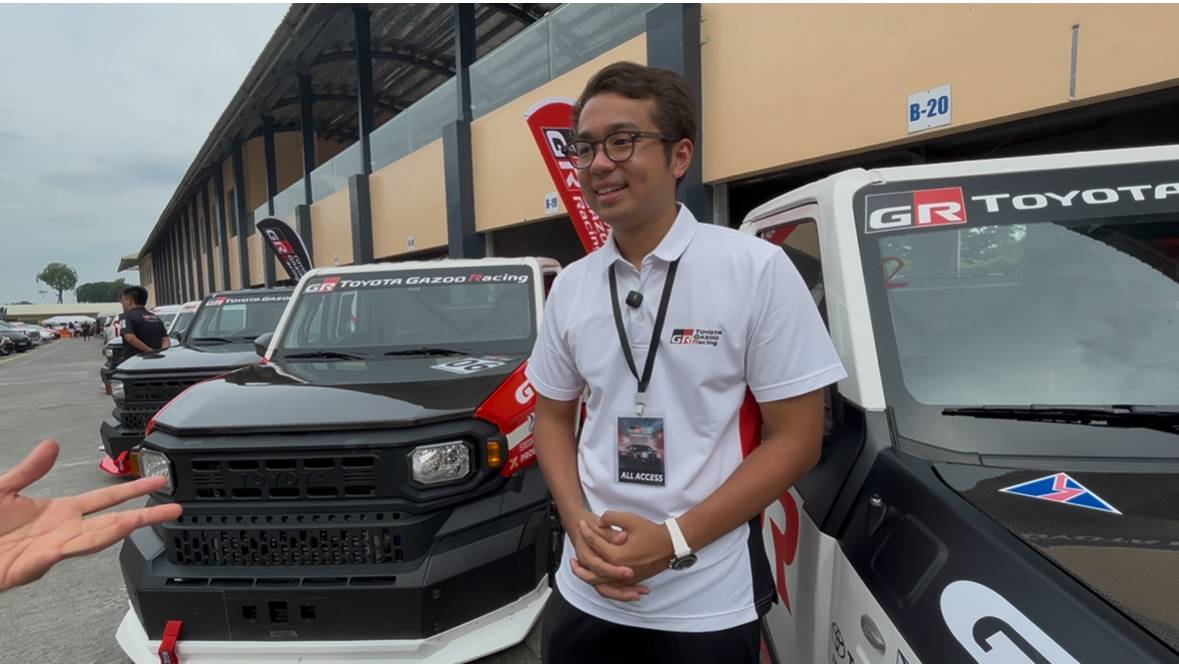
The next thing that Carlos Luis’ team did was to lighten up the vehicle. The passenger seat was removed, and so were the drop side panels. “I think the biggest weight reduction was the drop side. We shaved off around 80 to 100 pounds.
“We went out and on the first day, we did a 2:30 lap time. We had drivers going into the 2:29s, 2:28s,” Carlos said. To put these times into context, an unmodified, stock Tamaraw could safely complete the course in 2:55.
Carlos Luis said that the racing Tamaraws have the potential to perform even better on the track. “The setup you saw today is still very basic,” he stressed. “Moving forward, we will still continue to develop the car, and put more upgrades. In a few months, you will see a much more competitive Tamaraw.”
Carlos Luis didn’t tinker with the engines and transmission that much. He disclosed that he only did some bolt-ons on the intake, a full HKS exhaust system, and an after-market intercooler. The power essentially remained stock.
That means, by the time the starting gun of the Tamaraw Cup officially fires off next year, we will see true monster Tamaraws eating up record times at Clark.
Champion drivers
Carlos Luis Gono gained popularity as a champion karter, and one of the country’s youngest drift racers. In 2014, when he was just 15, Carlos Luis became the first overall champion of the first season of the Toyota Vios Cup. He was the grid’s youngest competitor.
Now, 11 years later, Carlos Luis is digging the role of builder, probably even more than being a race car driver. Asked what’s more fun for him, racing or building, without hesitation, he replied “building.”
“When you build the car properly, you will see how many drivers will enjoy using the car that you built. It helps you spread your love for cars more once they try it.”
Asked what single modification made the most impact in reducing the Tamaraw’s lap time, Luis said that it was the suspension. “When you lower the car, it stops feeling like a pickup, it stops feeling like a Tamaraw, it feels like a race car.”
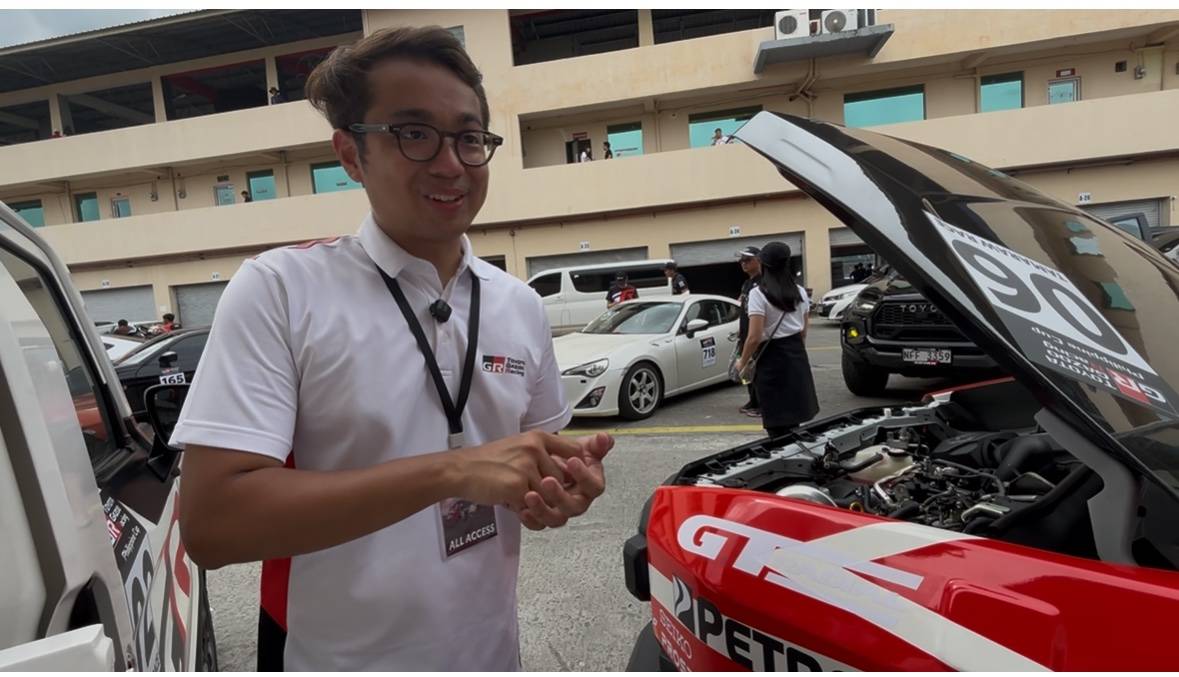
The team lowered about 2 inches in the front, and around an inch in the rear—big drops in the modding world.
Is fuel also a factor in racing? The Tamaraws used all ran on diesel.
Carlos Luis replied, “One of the benefits of the diesel engine is the instant torque. Going out of the corners, you step on the gas, the tail end’s gonna kick since it’s rear wheel drive, that’s why it’s exciting. Driving the racing Tamaraw requires a totally different skill set from driving the front-wheel drive Vios. You have to respect the throttle. You need to be careful with the brakes.”
So, is the racing Tamaraw still a Tamaraw? Carlos Luis explained, “It’s still a Tamaraw. And it’s just a testament to the quality of Toyota. It’s a pickup not meant to go racing. But as we saw earlier, the engineering and the people behind it built it to a standard that even if you push it to the limit, it still holds up.”
So, will Carlos Luis don his old racing suit and race with the Tamaraw?
“As of now, I’m focused on developing the cars for the drivers. I have been doing a lot of testing with the Tamaraw. We want to refine it to a point that anyone who gets in and drives it will be totally amazed.”
Carlos Luis’ team modified five Tamaraws for circuit, then modified another Tamaraw that could produce up to 400hp, a special racing unit that he calls a “super pickup.”
This “super pickup” can whip up 700 Nm of torque, more than twice that the stock Tamaraw could muster.
Even Carlos Luis, the mad modifier that he is, smiles and says, “Now that would be a riot to drive.”

